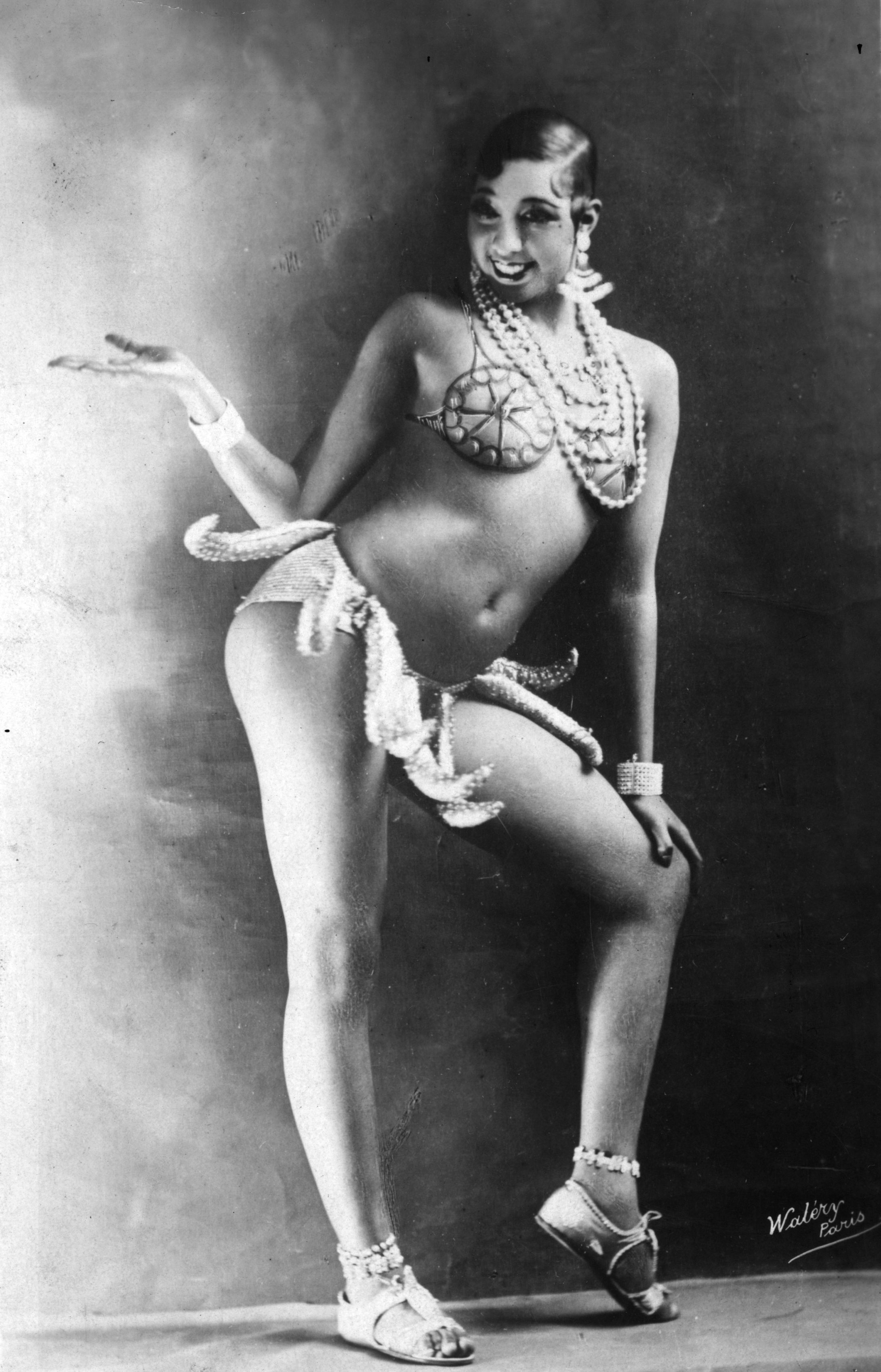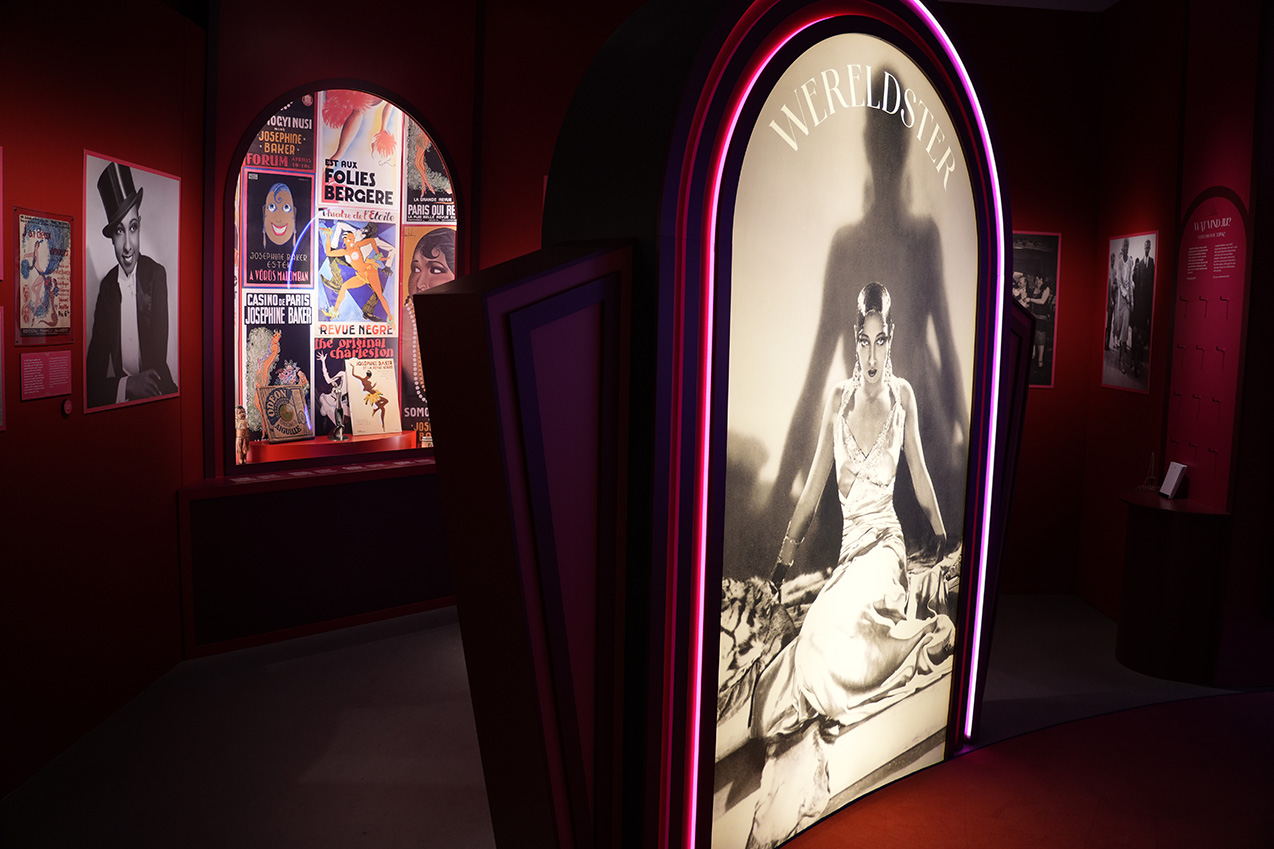Josephine Baker: a Life of Resistance
On view through 09 November 2025

In 2025, it will be fifty years since the passing of Josephine Baker, one of the most iconic performers of the twentieth century. A pioneering dancer, singer, and one of the first Black film stars, she left the racially segregated United States in the 1920s and rose to international fame in Paris. Far ahead of her time, Baker was a tireless advocate for civil rights and played an active role in the resistance against Nazi Germany. She also had a special connection to the Netherlands. The Resistance Museum Amsterdam honours her extraordinary legacy in the exhibition Josephine Baker: A Life of Resistance.
 Josephine Baker, born in 1906 in St. Louis, Missouri, grew up in poverty in a society shaped by systemic racism and segregation. From an early age, she found joy and purpose in dance and theatre—passions that would eventually take her across the Atlantic to Paris. There, she rose to international stardom with her trailblazing performances, including the legendary Danse Sauvage in her iconic banana skirt. Her breakthrough in France was remarkable at a time when Black artists were rarely celebrated on the world stage.
Josephine Baker, born in 1906 in St. Louis, Missouri, grew up in poverty in a society shaped by systemic racism and segregation. From an early age, she found joy and purpose in dance and theatre—passions that would eventually take her across the Atlantic to Paris. There, she rose to international stardom with her trailblazing performances, including the legendary Danse Sauvage in her iconic banana skirt. Her breakthrough in France was remarkable at a time when Black artists were rarely celebrated on the world stage.
But Baker’s legacy extends far beyond the spotlight. During the Second World War, she joined the French Resistance. Using her fame as a cover, she smuggled classified information and worked as a spy for the Allies. Her extraordinary bravery and commitment to freedom were later recognised with several honours. In 2021, she inducted into the Panthéon in Paris—the first Black woman to receive this national tribute.
Following the war, Baker remained deeply engaged in the struggle for civil rights. She adopted twelve children from different backgrounds—her so-called “rainbow tribe”—as a living embodiment of her ideals of equality and unity. She spoke out forcefully against racism in both the United States and Europe. In 1963, she joined Dr. Martin Luther King Jr. in the March on Washington, where she addressed the crowd as a guest speaker.

The exhibition at the Resistance Museum offers a rich and layered portrait of Josephine Baker’s extraordinary life and enduring legacy. It traces her early years in America, her artistic triumphs in Paris, her courageous wartime service, and her lifelong activism. Her connection to the Netherlands and the story of her rainbow family are also explored.
The exhibition also highlights the lasting impact Baker has had on generations of artists and creatives. Her striking image and unapologetic self-expression continue to influence fashion and pop culture today. International icons like Beyoncé, Madonna, and Diana Ross have cited her as an inspiration, while designers such as Jean Paul Gaultier, Prada, and Dior have drawn on her bold aesthetic. The exhibition features contemporary work by Dutch dancer and choreographer Sedrig Verwoert and artist/fashion designer Lissa Brandon—both of whom have been inspired by Baker’s visionary spirit.
Please note: Some images and language featured in the exhibition may be experienced as disturbing or offensive.
Josephine Baker’s life was marked by both adoration and discrimination. The Resistance Museum believes it is essential to present the historical reality in full, without obscuring the racist language or imagery of the time. By placing these elements in context, the exhibition reveals how Baker navigated—and challenged—a world that too often sought to reduce her to a stereotype.
The exhibition also includes historical footage in which Baker appears nude. These images reflect how she used her body and appearance as a powerful form of expression, reclaiming agency in a society that sought to objectify her.

|
Visitor advisory: Some images and quotations in the exhibition may be experienced as shocking or offensive.
Josephine Baker was the subject of both adoration and discrimination. To portray her story with honesty and integrity, the Resistance Museum finds it essential not to sanitise the historical reality or censor the racist language of the time. By placing such language in its proper historical context, the exhibition sheds light on how Baker navigated—and defied—a world that often sought to reduce her to a stereotype.
The exhibition also features archival footage in which Baker appears nude. These images reflect the ways in which she used her body and image as deliberate forms of artistic and personal expression. |